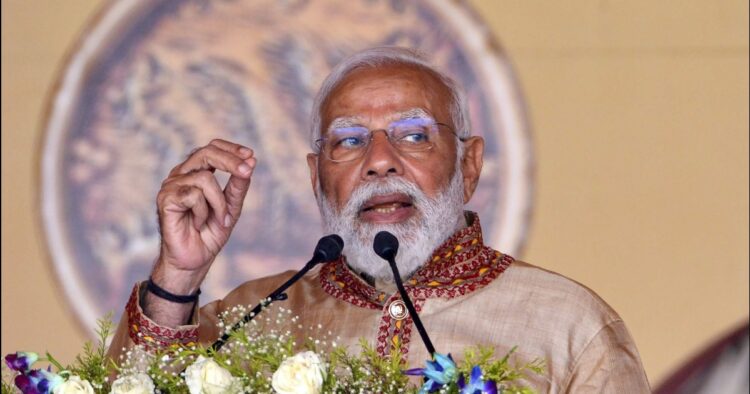Prime Minister Narendra Modi recently undertook a roadshow in Gurugram to mark the inauguration and foundation stone-laying of 112 National Highway projects valued at around Rs one lakh crore. The projects aim to enhance connectivity and alleviate traffic congestion in various regions of the country.
One highlight of the event was the inauguration of the Haryana section of the Dwarka Expressway, a significant 19 km stretch designed to improve traffic flow between Delhi and Gurugram on NH-48. The project, costing approximately Rs. 4,100 crore, includes two key segments: the 10.2 km Delhi-Haryana Border to Basai Rail-over-Bridge (ROB) and the 8.7 km Basai ROB to Kherki Daula. This expressway will directly connect the Indira Gandhi International Airport in Delhi and Gurugram Bypass.
Accompanied by Haryana CM Manohar Lal Khattar and Union Minister Nitin Gadkari, PM Modi inspected the Dwarka Expressway before the inauguration, emphasizing the government’s commitment to infrastructure development.
Apart from the Dwarka Expressway, several other major projects were inaugurated during the event. These include the 9.6 km Urban Extension Road-II (UER-II) in Delhi, Lucknow Ring Road packages in Uttar Pradesh, Anandapuram – Pendurthi – Anakapalli section of NH16 in Andhra Pradesh, Kiratpur to Nerchowk section of NH-21 in Himachal Pradesh, and Dobaspet – Heskote section in Karnataka, among others. The combined value of these projects amounts to Rs. 20,500 crores.
Moreover, the Prime Minister laid the foundation stone for various National Highway projects across the country, indicating the government’s commitment to further infrastructure development. Notable projects include the Bengaluru – Kadappa – Vijayawada Expressway in Andhra Pradesh, Belgaum – Hungund – Raichur Section of NH-748A in Karnataka, Shamli – Ambala Highway in Haryana, and Amritsar – Bathinda corridor in Punjab. These projects, along with 39 others, have an estimated value of Rs. 32,700 crores.
The Prime Minister emphasized that these projects are vital for the growth of the National Highway network and will play a crucial role in boosting socio-economic development, creating job opportunities, and promoting trade and commerce across different regions in the country. The government’s focus on infrastructure development remains a key strategy to stimulate overall growth and connectivity.

















Comments